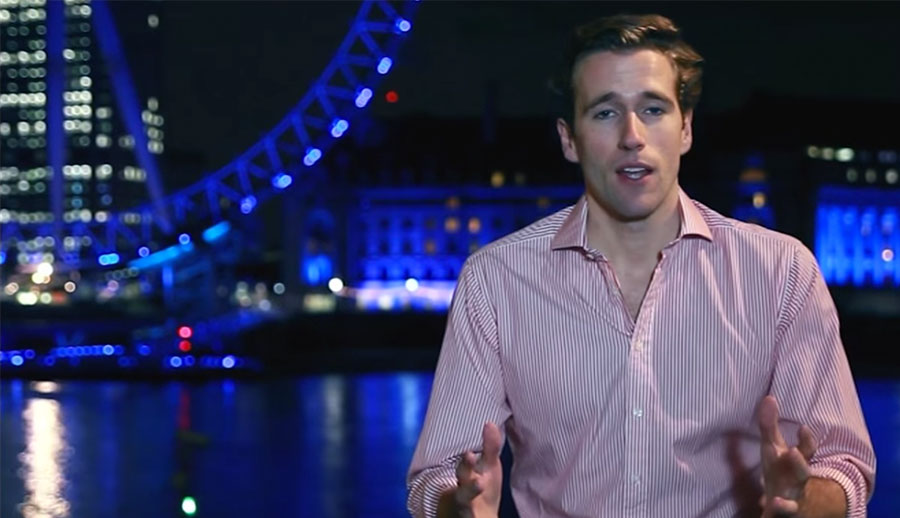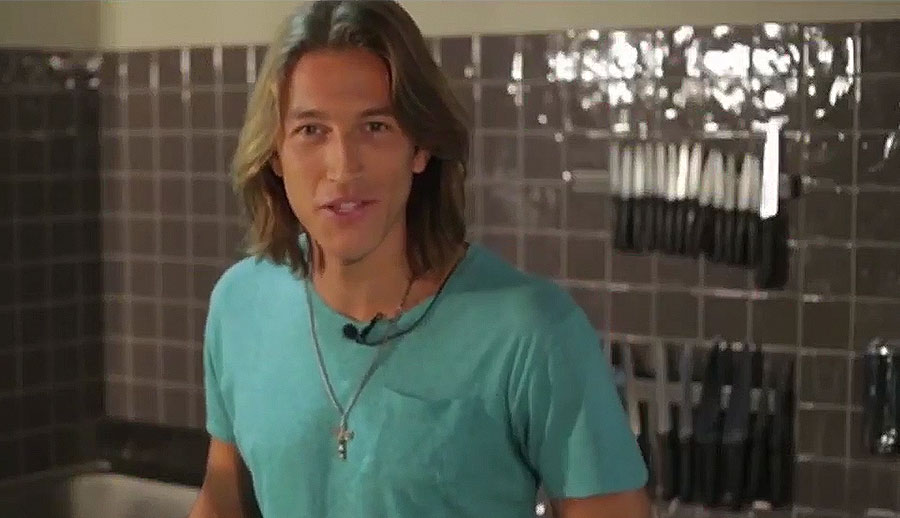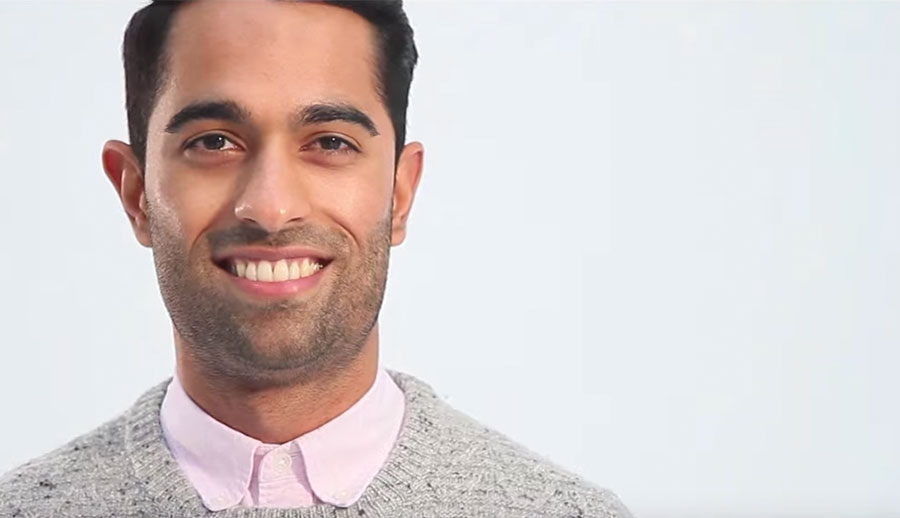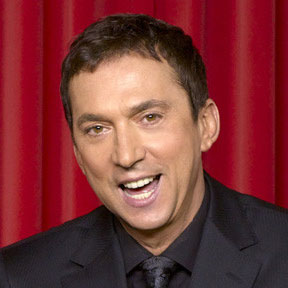-
.
-
Award-Winning Fast Track Programme
- The Original - voted the UK’s Best Presenter Course.
- Your ONLY opportunity to work with BAFTA, NTA winning Executive TV Producers and BBC Talent Executives - BBC/ITV/Channel 4/Channel 5//CBBC/BBC NEWS/SKY1 etc.
- NO EXPERIENCE REQUIRED – we kind of prefer it that way!
- Tailor-made training for each client - max 4 clients.
- Perfect for aspiring presenters, influencers and business people to maximise your presenting skills.
- Incredible Success Rate & 5 Star Reviews. The ONLY course endorsed by TV agents, TV companies and TV Channels.
- Clients win a place on our Talent Database - we put you up for our exclusive presenter jobs and amazing industry opportunities.
Why We're Voted The Best
Gareth Davies
Presentation Skills Training: The Importance of Pacing and Pausing in Presentations
The Importance of Pacing and Pausing in Presentations
When it comes to mastering presentation skills, pacing and pausing are two of the most crucial techniques to perfect. At The Presenter Studio, our presentation skills training emphasises these key elements to help you deliver a powerful and engaging performance. Let’s explore why pacing and pausing are so important and how they can transform your presentations.
Why Pacing Matters
Pacing refers to the speed at which you speak during your presentation. A well-paced presentation ensures that your audience can follow your message, stay engaged, and retain the information you’re sharing. Speaking too quickly can overwhelm listeners and make your message difficult to process, while speaking too slowly may cause your audience to lose interest.
With effective pacing, you can convey confidence and authority, highlight key points by varying your speed, and maintain your audience’s attention throughout your presentation.
Our presentation skills training provides practical exercises to help you find the perfect pacing rhythm, ensuring that your delivery feels natural and engaging.
The Power of the Pause
Pausing is an often-overlooked yet highly impactful tool in presentations. A well-timed pause allows your audience to absorb what you’ve just said, creating space for your message to resonate. It also gives you a moment to breathe, gather your thoughts, and maintain control of your delivery.
Key benefits of pausing include emphasizing key points, enhancing clarity by giving the audience a mental break, and building anticipation to keep your audience engaged.
At The Presenter Studio, we teach you how to use pauses effectively to enhance the impact of your presentations.
Finding the Right Balance
Striking the right balance between pacing and pausing requires practice and awareness. Here are some tips to get you started: rehearse with feedback, use natural speech patterns, and record yourself to identify areas for improvement.
Elevate Your Presentation Skills
Mastering pacing and pausing can take your presentations to the next level, making your delivery more impactful and memorable. At The Presenter Studio, our presentation skills training focuses on these critical techniques, helping you refine every aspect of your performance.
Ready to improve your presentation skills? Contact us today via the website or email and learn how to pace and pause like a pro. www.presenterstudio.com or This email address is being protected from spambots. You need JavaScript enabled to view it.
The Importance of What You Wear in Presentation Skills Training
The Importance of What You Wear in Presentation Skills Training
When it comes to delivering a powerful presentation, what you wear can be just as important as the words you say. At The Presenter Studio, we emphasize that your clothing choices are a critical component of your overall presentation, contributing significantly to how you’re perceived by your audience. Here’s why your wardrobe matters and how you can dress for success.
First Impressions Count
Your audience forms an impression of you within seconds, and your attire is one of the first things they notice. The way you dress sets the tone for your presentation, reflecting your professionalism, confidence, and respect for your audience. It’s important to consider how your outfit aligns with the message you want to convey and the expectations of your audience.
Bold Colours Make a Statement
When choosing what to wear, bold colours are often a smart choice. Vibrant hues like royal blue, deep red, or emerald green can help you stand out and command attention. These colours convey energy and confidence, making it easier for your audience to stay engaged. However, balance is key—opt for one bold piece and pair it with neutral tones to avoid overwhelming your audience.
Clean Lines for a Polished Look
Clothing with clean, sharp lines creates a polished and professional appearance. Well-tailored suits, crisp shirts, or structured dresses project confidence and competence. Avoid overly fussy or loose garments that might look unkempt or distract from your message.
Reflect Your Brand
Your outfit should reflect the brand and culture of the business you’re representing. For instance, if you’re presenting on behalf of a corporate organisation, a sleek and professional look might be appropriate. If you’re representing a creative or innovative brand, you might choose something more modern or edgy. By aligning your wardrobe with the brand’s identity, you strengthen the connection between your presentation and the company you’re representing.
Practical Considerations
While style is important, practicality should not be overlooked. Ensure your clothing is comfortable enough for you to move naturally and confidently. Avoid outfits that restrict your movement or require constant adjustment. Similarly, consider the environment in which you’ll be presenting—is it formal, casual, or somewhere in between?
Final Thoughts
At The Presenter Studio, we believe that every element of your presentation contributes to its success, including your clothing. Dressing with intention can enhance your presence, reinforce your message, and help you feel more confident. Whether it’s bold colours, clean lines, or brand alignment, what you wear can elevate your presentation to the next level.
Ready to refine your presentation skills? Contact us at The Presenter Studio to learn more about how we can help you shine in every aspect of your public speaking journey. For more information on how we can help you visit our website: https://www.presenterstudio.com/business-presenter-training/presentation-skills-training
Presentation Skills Training - The Importance of Structure in Presentations
The Importance of Structure in Presentations
When it comes to delivering impactful presentations, structure is everything. Whether you’re pitching a product, delivering a keynote, or conducting a team meeting, a well-structured presentation ensures your message is clear, compelling, and memorable. Without structure, even the most exciting ideas can become muddled, leading to disengagement and confusion. In this article, we’ll explore why structure matters and how presentation skills training can help you master this essential element.
Why Structure is Crucial in Presentations
Enhances Clarity
A structured presentation provides a clear roadmap for your audience. It helps them follow your train of thought and understand how each point connects to your overall message. By organizing your content into an introduction, main body, and conclusion, you guide your listeners on a logical journey, leaving no room for confusion.
Engages Your Audience
A disorganized presentation can quickly lose your audience’s attention. Structure allows you to build momentum and maintain interest by presenting information in a sequence that’s easy to digest. Techniques such as storytelling, breaking content into sections, and using transitions can keep your audience engaged from start to finish.
Reinforces Key Messages
Repetition and strategic placement of key messages ensure they stick with your audience. A structured approach allows you to emphasize critical points at the right moments, such as during your introduction, transitions, and conclusion.
Boosts Your Confidence
When you have a well-organized presentation, you’ll feel more confident delivering it. Knowing exactly what comes next and having a clear plan reduces the likelihood of getting sidetracked or flustered. Confidence is contagious, and a composed presenter is far more likely to inspire trust and enthusiasm.
How to Build a Strong Presentation Structure
Start with a Clear Objective
What do you want your audience to think, feel, or do after your presentation? Begin by defining a single, focused goal. This will serve as the backbone of your structure.
Use the Classic Three-Part Framework
Introduction: Grab your audience’s attention, establish credibility, and preview your key points.
Body: Divide your content into main sections, each addressing a key point. Use examples, data, and stories to support your arguments.
Conclusion: Summarize your main points, reinforce your key message, and include a call to action if applicable.
Incorporate Visual Aids Strategically
Slides, charts, and graphics should complement your message, not overshadow it. Use visuals to reinforce key ideas and make your content more engaging.
Practice and Refine
Rehearsing your presentation helps you identify weak points in your structure and refine your delivery. Presentation skills training can be invaluable in helping you polish your skills and receive constructive feedback.
The Role of Presentation Skills Training
Mastering the art of presentation takes practice, and structured training can accelerate your progress. Presentation skills training focuses on:
Building confidence and reducing anxiety. Teaching techniques for structuring content effectively. Enhancing delivery through vocal tone, body language, and eye contact. Tailoring presentations to different audiences and objectives.
By investing in training, you can transform your presentations from mediocre to outstanding, ensuring your message resonates with your audience every time.
Final Thoughts
Structure is the foundation of any successful presentation. It provides clarity, engages your audience, and boosts your confidence, all while ensuring your key messages are delivered effectively. If you’re looking to elevate your presentation game, consider enrolling in presentation skills training. With the right tools and techniques, you’ll be able to deliver structured, impactful presentations that leave a lasting impression.
How Less is More in Communication Skills
In the art of communication, the adage "less is more" holds a timeless truth. Whether you are delivering a presentation, leading a team meeting, or having a personal conversation, simplicity can be your most powerful tool. Cutting through the noise and getting straight to the heart of your message creates clarity, impact, and connection—all essential elements of effective communication.
We live in a world inundated with information. From endless emails to lengthy presentations, it’s easy for messages to get lost in the clutter. Being concise doesn’t mean cutting corners or leaving out important details. Rather, it means focusing on what truly matters and presenting it in a way that is easy to understand and remember.
Great communicators understand that the key to being heard is not saying more, but saying it better. By distilling complex ideas into clear, impactful messages, you not only capture attention but also show respect for your audience’s time and mental bandwidth. When your communication is concise, it is more likely to resonate and stick with your audience long after the conversation ends.
The power of simplicity can be seen across all forms of communication. In public speaking, for example, short and impactful sentences often carry more weight than lengthy, meandering ones. Famous speeches—from Martin Luther King Jr.'s "I Have a Dream" to Steve Jobs’ product launches—are celebrated not just for what was said, but for how succinctly and powerfully the message was delivered. Each word was intentional, each pause deliberate.
In professional environments, brevity is equally valuable. Whether you’re writing an email, pitching an idea, or leading a discussion, getting to the point quickly signals confidence and competence. Long-winded explanations can lose your audience and dilute your message. Instead, focus on the essential points, and let your audience ask follow-up questions if they need more detail.
However, practicing the "less is more" approach requires thoughtful preparation. Start by identifying your core message. Ask yourself, "What do I want my audience to take away from this?" Once you have clarity on your goal, eliminate any unnecessary words, jargon, or tangents. Simplicity does not come at the cost of depth; it’s about presenting depth in a streamlined way.
Active listening also plays a vital role in concise communication. When you listen carefully to your audience, you can tailor your message to address their specific needs and interests. This prevents over-communication and ensures that your words are both relevant and impactful.
At The Presenter Studio, we teach the art of impactful communication. One of our core principles is helping individuals master the balance between saying enough and saying too much. When you embrace the philosophy of "less is more," you give your audience the space to process, understand, and connect with your message. Remember, communication isn’t about how much you say; it’s about how well you say it.
So, the next time you communicate, think about simplicity. Strip away the excess, focus on your key points, and deliver your message with clarity and intention. In the end, less truly is more. For more information about our presentation skills courses visit the website: https://www.presenterstudio.com/business-presenter-training/presentation-skills-training or send us an email This email address is being protected from spambots. You need JavaScript enabled to view it.
Communication Skills Course: The Importance of Warmth
In any interaction, whether personal or professional, the way we communicate profoundly shapes the connections we build. While clarity and confidence often take center stage, there is one often-overlooked element that truly transforms communication: warmth. Warmth has the power to humanize conversations, foster trust, and create a genuine bond between speaker and listener. For anyone seeking to elevate their communication skills, cultivating warmth is essential.
Warmth is not merely a trait; it is an active choice and a skill that can be developed. It manifests in our tone of voice, facial expressions, body language, and even the words we choose. When we communicate with warmth, we signal to others that we are approachable, empathetic, and genuinely interested in them. This, in turn, encourages openness and creates an environment where people feel valued and understood.
In professional settings, warmth can be a game-changer. Presenters, team leaders, and anyone in client-facing roles benefit immensely from being perceived as warm. Audiences are more likely to engage with someone they find relatable and trustworthy. A warm communicator can turn a rigid business pitch into a compelling story, a tense meeting into a collaborative dialogue, and a skeptical audience into active participants. It’s not just about delivering information; it’s about making people feel something positive when they hear you speak.
Research backs up the importance of warmth in communication. Studies show that people assess trustworthiness—a key component of warmth—before they evaluate competence. This means that no matter how skilled or knowledgeable you are, your message may not land effectively if it’s not delivered with genuine warmth. By prioritizing warmth, you build rapport, reduce resistance, and make your communication more memorable.
Warmth also plays a critical role in personal interactions. Friends, family, and colleagues all gravitate towards those who make them feel valued and heard. Simple acts like maintaining eye contact, offering a sincere smile, and speaking with an empathetic tone can transform everyday conversations into meaningful exchanges. These habits not only enhance your relationships but also reflect positively on your overall character.
Developing warmth in communication requires self-awareness and practice. Start by paying attention to your nonverbal cues. Are your facial expressions welcoming? Does your body language convey openness? Then, focus on your tone of voice. A calm, enthusiastic, or gentle tone can work wonders in making your message more appealing. Finally, make a conscious effort to listen actively. Warmth isn’t just about how you speak; it’s about making others feel heard and valued.
At The Presenter Studio, we believe that great communicators don’t just inform—they inspire, connect, and engage. Warmth is the secret ingredient that makes all this possible. Whether you’re speaking to a crowd of hundreds or having a one-on-one conversation, warmth has the power to transform how your message is received. Embrace it, and watch as your communication skills reach new heights. For more information on our presentation skills courses visit: https://www.presenterstudio.com/business-presenter-training/presentation-skills-training or drop us an email at This email address is being protected from spambots. You need JavaScript enabled to view it.
Why It’s Important to Reflect Your Company’s Tone and Feel in Public Speaking
Aligning Your Presentation with Your Brand
Public speaking isn’t just about delivering information; it’s about representing your company, its values, and its personality. Whether you’re pitching to clients, addressing employees, or speaking at a conference, your tone and delivery should align with your company’s brand identity. At The Presenter Studio, our public speaking courses teach you how to present in a way that reflects the unique tone and feel of your organization.
Why Tone and Feel Matter
When you step up to speak, you’re not just representing yourself - you’re embodying your company. Audiences will make judgments not only about you as a speaker but also about your organization based on your delivery. A mismatch between your tone and your company’s identity can create confusion, undermine credibility, and even damage trust.
For example, a speaker representing a fun, creative brand should deliver a presentation that feels dynamic and engaging. In contrast, a representative of a serious, professional company should adopt a more formal and authoritative tone. The way you communicate must be consistent with what your audience expects from your organization.
Building Trust and Connection
Consistency between your presentation style and your company’s tone helps build trust. Audiences are more likely to believe in your message when your delivery reflects your brand. For instance, if your company values transparency, your tone should be open and conversational. If your business is known for innovation, your presentation should feel forward-thinking and dynamic.
This alignment also helps you connect with your audience. When your tone feels authentic to your company’s identity, it creates a sense of familiarity and credibility, making it easier to engage your listeners and leave a lasting impression.
Reinforcing Your Brand Identity
Public speaking is an opportunity to reinforce your company’s identity. Through your tone, storytelling, and delivery, you can bring your company’s values and culture to life. This is particularly important in external presentations, where your speech might be someone’s first impression of your brand. A consistent tone helps ensure that your message is memorable and aligned with your company’s goals.
How The Presenter Studio Can Help
At The Presenter Studio, we specialise in tailoring public speaking courses to meet your needs. We’ll help you develop a presentation style that reflects your company’s tone, whether that’s fun and energetic, calm and professional, or anything in between. You’ll learn how to embody your brand while staying true to your personality, creating a seamless blend that resonates with your audience.
By aligning your tone with your company’s identity, you can deliver presentations that not only inform but also inspire trust and connection, strengthening your role as a brand ambassador.
For more information on our public speaking courses, visit our website at www.presenterstudio.com or email us at This email address is being protected from spambots. You need JavaScript enabled to view it.
Why Slides Are Not Always a Good Idea For Public Speaking
Rethink Your Approach to Public Speaking
When it comes to delivering impactful presentations, many people rely heavily on slides. While they can be a helpful tool, slides often do more harm than good, especially when overused or poorly designed. At The Presenter Studio, we emphasize the power of your personal presence and delivery in our public speaking courses, showing you how to connect with your audience without hiding behind a screen.
The Problem with Slides
Slides can easily become a crutch, taking the focus away from the speaker and diluting the power of your message. Instead of engaging with you, the audience’s attention is split between trying to read the slides and listening to what you’re saying. This disconnect makes it harder to create a memorable impact.
In many cases, slides end up being overloaded with text or complex visuals. These distractions can overwhelm your audience, making your presentation harder to follow. Remember, a presentation isn’t about reading bullet points off a screen; it’s about telling a compelling story and connecting with your audience.
Why People Rely on Slides
Slides are often used as a security blanket to guide the presenter or to avoid the challenge of fully engaging with an audience. However, this reliance can result in a presentation that feels impersonal and disconnected. The audience comes to hear you, not read slides.
The Power of a Slide-Free Presentation
Removing slides allows you to focus on what truly matters: your delivery, storytelling, and audience engagement. Without slides, you’re free to move, make eye contact, and interact with your audience in a way that feels natural and authentic.
By ditching slides, you’re also forced to refine your message. This means you can focus on what’s most important, delivering a clear and impactful presentation without the clutter. When done well, this approach is far more memorable than a slideshow.
What We Teach at The Presenter Studio
Our public speaking courses focus on helping you deliver presentations with confidence and personality. We teach you how to craft a compelling message, use your voice effectively, and engage with your audience. You’ll learn that the most powerful visual aid in any presentation is you.
By reducing your reliance on slides, you’ll become a more dynamic and authentic speaker, leaving a lasting impression on your audience.
Read more about our public speaking courses here: https://www.presenterstudio.com/business-presenter-training/presentation-skills-training
The Importance of Personality in Media Training
Why Personality Matters in Media
When it comes to media training, one thing stands out above all else: personality. In today’s media landscape, audiences are drawn to individuals who feel authentic, relatable, and engaging. Whether you're representing a business, speaking as a thought leader, or hosting a TV show, your personality can be your greatest asset—or your biggest missed opportunity. At The Presenter Studio, we place a strong emphasis on helping you uncover and showcase the unique traits that make you, you.
Authenticity Builds Trust
Audiences can sense when someone is being genuine. That’s why authenticity is critical in media. In every interaction—whether it’s a live interview, a press conference, or a pre-recorded video—your personality is what makes your message relatable and believable.
Media training isn’t about creating a "perfect" version of you; it’s about amplifying your authentic self. The goal is to build trust with your audience by being the best version of yourself, not someone else.
Standing Out in a Competitive World
The media world is crowded, and every day, countless voices compete for attention. To stand out, you need more than just a clear message—you need to leave a lasting impression. Your personality is what makes you memorable. It adds color, energy, and individuality to your delivery, ensuring your audience remembers not just what you said, but how you made them feel.
Connecting With Your Audience
Personality is the bridge that connects you to your audience. Whether you're speaking to journalists, customers, or the public, they want to see someone who is approachable, confident, and engaging. Media training helps you develop the skills to project these qualities naturally while adapting your style to suit the specific audience you’re addressing.
Overcoming Nerves and Embracing Your Unique Style
It’s common to feel nervous in front of the camera or during a high-pressure interview. Often, nerves can lead people to retreat into themselves, hiding the very personality that could make them shine. Media training helps you manage those nerves and embrace your unique style. We show you how to lean into your natural charisma, so your personality becomes a strength rather than something you suppress.
Why Personality Is a Key Focus at The Presenter Studio
At The Presenter Studio, we know that no two people are the same, which is why our media training is tailored to bring out the best in you. We help you discover your natural style and show you how to use it effectively across all forms of media. Whether you’re quiet and thoughtful or bold and dynamic, your personality is the key to making meaningful connections with your audience.
Our training isn’t about teaching you to “perform”; it’s about helping you shine as your authentic self. That’s what creates impact, builds trust, and delivers results.
If you're ready to harness the power of your personality, The Presenter Studio is here to help. Get in touch today and discover how our bespoke media training can unlock your full potential. Drop us an email This email address is being protected from spambots. You need JavaScript enabled to view it. or check out the website https://www.presenterstudio.com/business-presenter-training/media-training
What do you do in media training?
What Our Media Training Covers
The Presenter Studio: Expert Media Training Tailored for You
At The Presenter Studio, we’re passionate about helping you master the art of communication in the fast-paced world of media. Whether you’re a business leader, spokesperson, or aspiring presenter, our media training sessions are designed to equip you with the confidence and skills you need to shine in every media interaction.
Our media training covers everything you need to excel in front of the camera, microphone, or during a live interview. We teach you how to handle interviews with professionalism and poise, including how to answer tough questions, stay on message, and build a genuine connection with your audience.
We also help you craft and refine your key messages. Every media opportunity is a chance to share your story, so we ensure your delivery resonates and remains clear and impactful. You’ll learn to strip away unnecessary jargon and communicate with clarity and purpose.
A major focus of our training is your on-screen presence. We work with you to improve your body language, eye contact, and vocal delivery, helping you project confidence and manage any nerves you may feel. This is essential for anyone appearing on television, in online videos, or during live broadcasts.
In high-pressure scenarios, such as crisis communication, we’ll show you how to remain composed and handle challenging moments with professionalism and empathy. With the right approach, you’ll be able to turn potential difficulties into opportunities to build trust and credibility.
Our training also provides insight into the media landscape, giving you a deeper understanding of how journalists work and the differences between print, broadcast, and online platforms. This knowledge helps you adapt your style and approach depending on the format you’re working with.
Why Choose The Presenter Studio?
Our media training is always tailored to your specific needs, ensuring a bespoke experience that delivers tangible results. With our team of seasoned media professionals and years of industry expertise, we’ll help you make a lasting impact in every media engagement.
Whether you’re preparing for a TV interview, a podcast appearance, or a press conference, The Presenter Studio is your trusted partner in achieving media success. You can read more about our media training here: https://www.presenterstudio.com/business-presenter-training/media-training
How to Apply for Traitors - Season 4
We've been gripped by this year's Traitors once again on the BBC.
The casting has been superb. And the gameplay is just fascinating to watch.
The twists. The turns. Claudia's outfits. It's got it all.
So if you want to apply for series 4 of The Traitors you can - simply follow this link here: https://www.bbc.co.uk/showsandtours/take-part/the-traitors#how-to-apply
-
Watch Our Amazing Talent Taster Tapes
Talent Taster Tapes
We are the ONLY company to give you an industry recognised showreel.
That’s because we are the ONLY company to brand and market you for the genre of TV you are suited to.
In TV we call showreels 'Talent Taster Tapes' - and with us, that's what you'll get.
-
Optional Extras























